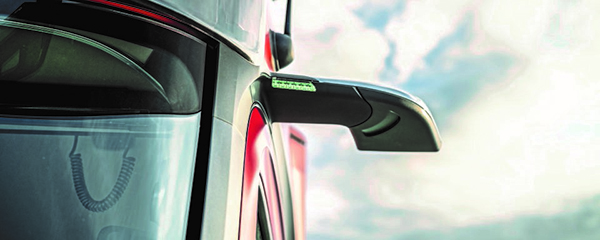The world’s leading trade show for transport, logistics and mobility, The International Automotive Fair (IAA) for Commercial Vehicles, kicked off last week with a focus on innovation in the automotive industry. One of the central themes of this year’s show looks at what the future of commercial travel will be like—from connected vehicles to automated driving and alternative powertrains.

The Mercedes Actros promises to be the first series production truck without exterior mirrors. The fact that cameras will replace exterior mirrors in the future has been repeatedly hinted by concept vehicles. But next year, the technology will finally be on the road in a commercial vehicle and is intended to improve aerodynamics as well as safety and vehicle handling. The innovative new design is being showcased at the International Automotive Fair for Commercial Vehicles.
The MirrorCam system consists of two cameras mounted on the outside of the vehicle with the image transferred to two 15-inch displays located on the inside of the A-pillars in the cab—providing the driver with a greatly improved all-round view. The camera system also enables a special maneuvering view for reversing with a trailer, a night vision mode and quick activation in case of suspected cargo theft.
The absence of expansive mirrors also provides aerodynamic advantages, which among other things, can reduce fuel consumption by up to five percent compared to the previous model.
Cars follow suit: Production of the Audi E-tron has started
The launch of camera-based exterior mirrors was also announced in the passenger car sector. The electric SUV Audi E-tron will be the first series production car in which classic exterior mirrors are replaced by cameras. Images of traffic behind the vehicle are displayed on OLED screens in the door panel which adapt to the driving situation and offer special views for motorways, turning and maneuvering.
Audi started mass production of the Audi E-Tron in Brussels on Monday September 3, for which the OEM has “extensively restructured” its plant in Brussels, explained Peter Kössler, Production and Logistics Director of Audi AG.
The E-Tron is “a real pioneer” with the new technology in the brand’s first electric vehicle—not only offering advantages in terms of air resistance and design, but also increasing ride comfort and safety.
Getting ready for what’s next in automotive manufacturing
The automotive industry is on a rapid path of innovation, from automation and connectivity, to improved safety, environmental protection and electric mobility. Keeping pace with innovation and staying ahead of the competition requires flexible software support. Software plays a key role in the ability to adapt production processes to react to market change.
With the right strategy, automotive manufacturers can make sure this year’s International Automotive Fair for Commercial Vehicles isn’t their last.



